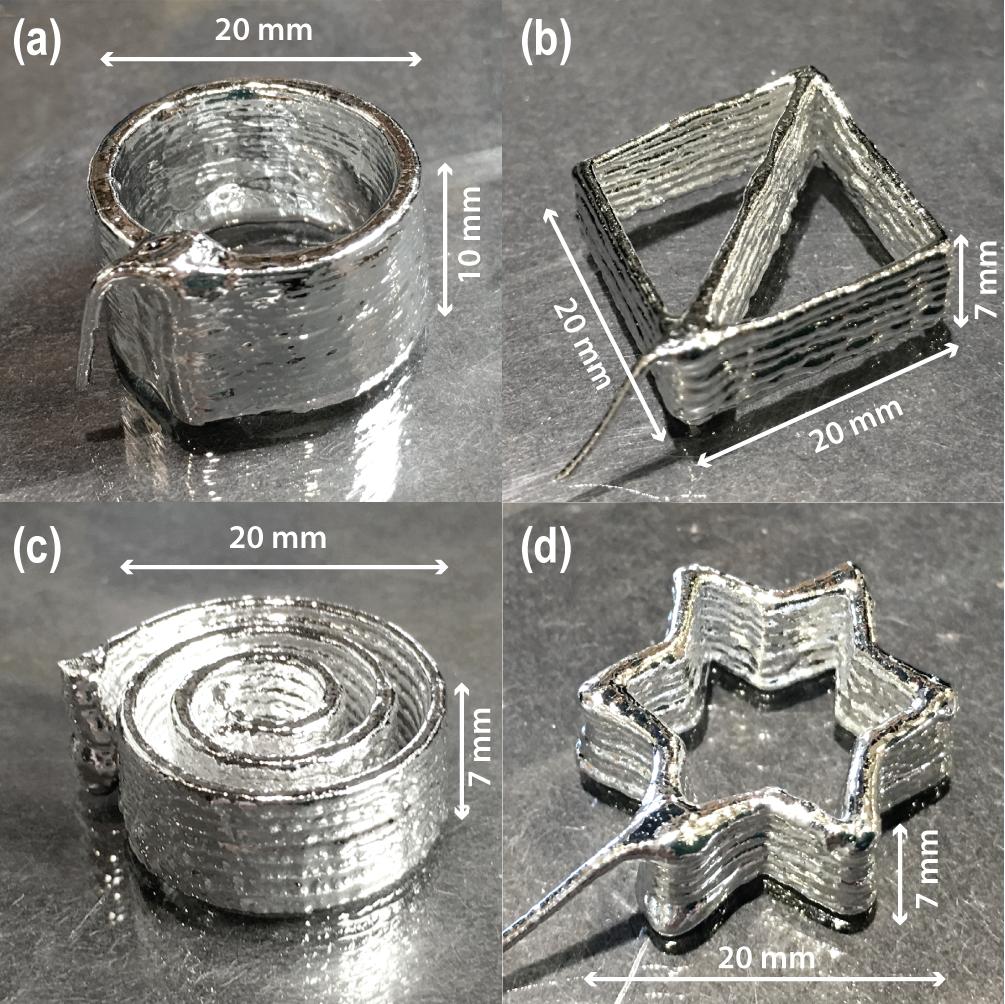
Researchers at Oregon State University (OSU)'s College of Engineering have taken a key step toward the rapid manufacture of flexible computer screens and other stretchable electronic devices, including soft robots.
The advance by a team within the college's Collaborative Robotics and Intelligent Systems Institute paves the way toward the 3D printing of tall, complicated structures using a highly conductive gallium alloy known as galinstan, which is liquid at room temperatures. The researchers found that adding nickel nanoparticles to galinstan thickens it into a paste with a consistency suitable for additive manufacturing.
"The runny alloy was impossible to layer into tall structures," said Yigit Mengüç, assistant professor of mechanical engineering and co-corresponding author of a paper on this research in Advanced Materials Technologies. "With the paste-like texture, it can be layered while maintaining its capacity to flow, and to stretch inside of rubber tubes. We demonstrated the potential of our discovery by 3D printing a very stretchy two-layered circuit whose layers weave in and out of each other without touching."
Gallium alloys are already being used as the conductive material in flexible electronics; the alloys have low toxicity and good conductivity, plus they're inexpensive and ‘self-healing’ – able to attach back together at break points. But prior to the modification developed at OSU, which saw the researchers using sonication – the energy of sound – to mix the nickel particles and oxidized gallium into the liquid metal, the alloys' printability was restricted to two dimensions.
For this study, researchers printed structures up to 10mm high and 20mm wide. "Liquid metal printing is integral to the flexible electronics field," said co-author Dogan Yirmibesoglu, a robotics PhD student at OSU. "Additive manufacturing enables fast fabrication of intricate designs and circuitry."
Examples of flexible electronics include: electrically conductive textiles; bendable displays; sensors for torque, pressure and other types of strain; wearable sensor suits, such as those used in the development of video games; antennae; and biomedical sensors. "The future is very bright," Yirmibesoglu said. "It's easy to imagine making soft robots that are ready for operation, that will just walk out of the printer."
The gallium alloy paste demonstrates several features new to the field of flexible electronics, added co-corresponding author Uranbileg Daalkhaijav, a PhD candidate in chemical engineering. "It can be made easily and quickly. The structural change is permanent, the electrical properties of the paste are comparable to pure liquid metal and the paste retains self-healing characteristics."
Future work will explore the exact structure of the paste, how the nickel particles are stabilized and how the structure changes as the paste ages.
This story is adapted from material from Oregon State University, with editorial changes made by Materials Today. The views expressed in this article do not necessarily represent those of Elsevier. Link to original source.


